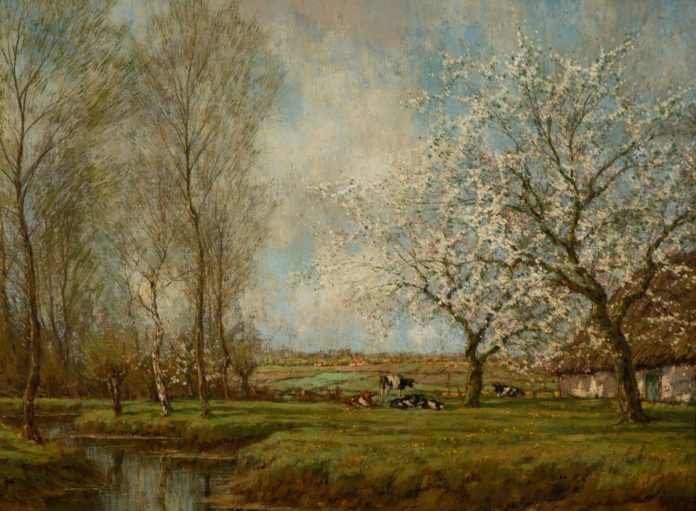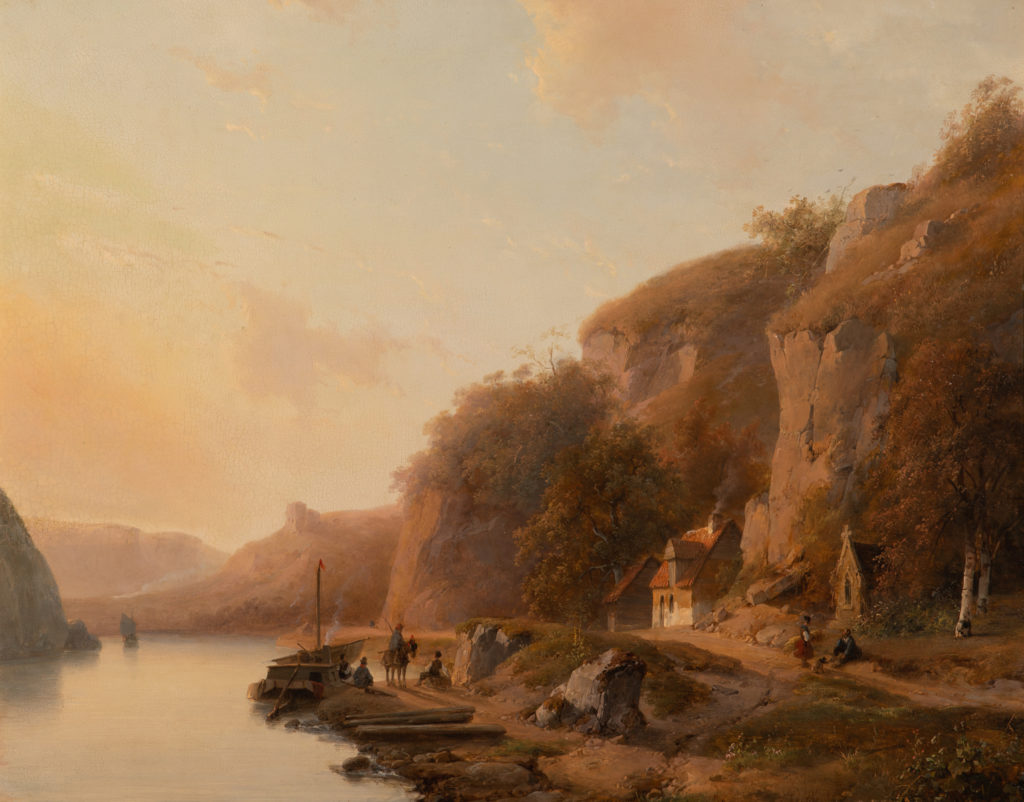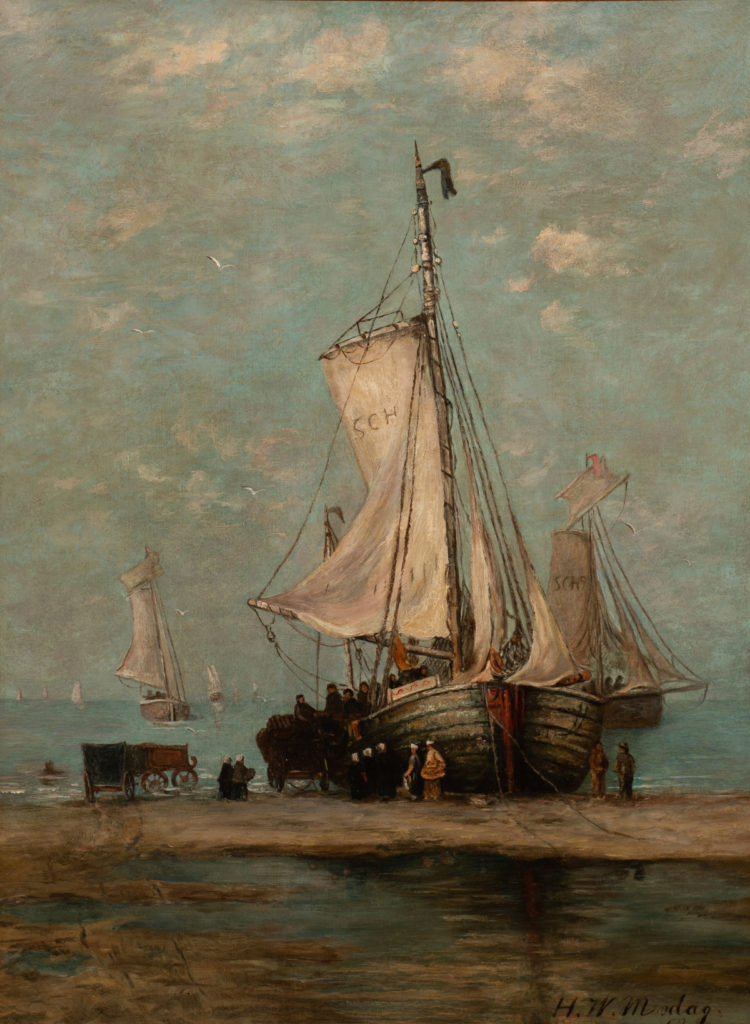
Art Exhibition:
Crocker Art Museum, Sacramento CA
“Country, City and Sea: Dutch Romantic and Hague School Paintings from the Beekhuis Gift,” is an exhibition of 50 works that highlight the techniques of distinguished 19th-century artists whose paintings sought to portray the Netherlands’ distinct culture in bucolic pasturelands, bustling city views, and scenes of merchant ships.
A restrained Romanticism, inspired by the virtuosity and subject matter of the Dutch Golden Age, gave way in the 1860s to a direct, tonal style that was nature-based and favored by the Hague School. Jacob Maris, Hendrik Mesdag, and Jozef Israels, all admired by Vincent van Gogh, are just a few of the artists represented in the exhibition.
“The paintings in this exhibition represent a selection from this important American collection and complement the Crocker’s renowned holdings of German and Austrian art of the same period,” says the Museum’s Executive Director and CEO, Lial A. Jones. “We are grateful to the Beekhuis Family Foundation for this and earlier gifts. Jan and Mary Ann were consummate collectors and we are eager to share their eye with the public so they may have the opportunity to discover the masterworks that have recently entered the Crocker’s collection.”
In the 19th-century Netherlands, painters took inspiration from the lively artistic world of Rembrandt two centuries earlier. As the country sought a national culture after 50 years of upheaval (beginning with the French invasion of 1795 and ending with peace with Belgium in 1839), artists sought to emphasize the emotive qualities of Dutch life and lands.
Unlike its counterparts in Germany or France, Dutch Romanticism was not associated with high passion and dramatic vistas, but rather with the restrained exploration of emotional warmth and beauty. Scenes were composed for a specific effect, often achieved in combination with imagined elements and highly finished brushwork. Nostalgia for traditional life in an age of rapid industrialization, the relationship between humanity and the sea, and the intimacy of farm and peasant life were all themes of Dutch Romantic art.
Among the Dutch Romantics, Andreas Schelfhout was one of the most popular, known for his farming landscapes and winter scenes. In “View of a River Gorge” (below), Schelfhout sets the scene along a rock-lined river, perhaps in Limburg with its rolling hills and shallow gorges. A house and chapel are nestled under the rocks above, while one boat is docked to receive goods and another floats the river beyond. The people calmly go about their business or, as at right, chat by the roadside. The congenial atmosphere is heightened by the pleasant glow of the midday sun.

Later in the century, Dutch artists looked toward a more realistic view of nature and their surroundings. After working with Barbizon painters such as Théodore Rousseau in France during the 1850s, many Dutch painters brought a new unpretentiousness to their native landscape, along with a preference for a tonal palette and loose brushwork. Working outdoors to better capture light effects, many of these artists gathered in the countryside village of Oosterbeek, a vacation spot for wealthy patrons.
Some artists, on the other hand, used the new tonal mode to depict the coast and life at sea. In the 1870s, the opportunities offered by the Dutch political capital, the Hague, attracted artists to the city. With associations of artists such as Pictura and Pulchri Studio, it was fertile ground for the exchange of ideas and provided a ready market for their paintings. Soon, they became known as the Hague School painters.
Perhaps the most famous of these artists was Hendrik Mesdag, a marine painter enchanted by the Hague’s seaside district of Scheveningen, identified above by the SCH on the sails of the boat in “Large Fishing Barge Ashore” (below).

Attentive to detail, Mesdag depicts an everyday scene with a fishing boat drawn up on shore to unload the day’s catch, while women gather on the shoreline to inspect the merchandise.
These works and many others were collected by the late Jan Beekhuis and his wife, Mary Ann. Jan was born to a Dutch family in South Africa and grew up in a cultured household adorned with 19th-century Dutch paintings. Once he had the means to continue this interest, he collected Asian, pre-Colombian, and African art before specializing in the Dutch paintings he had known as a youth.
Trained in medicine in Pretoria, he came to the United States and eventually became chairman of the Department of Otolaryngology at Wayne State University. In addition to contributing to the formation of the collection, Mary Ann, also trained as a frame restorer for its care, preserved it intact after Jan’s death.
The paintings in the exhibition account for some 25 percent of the more than 200 works given by the Beekhuis Foundation, established by the couple in 2000. Their first major gift to the Crocker of 65 19th-century Dutch paintings in 2010 established the Beekhuis Family Gallery and provided a fitting counterpoint to the Museum’s collection.
To learn more about “Country, City and Sea: Dutch Romantic and Hague School Paintings from the Beekhuis Gift,” please visit CrockerArt.org.
> Visit EricRhoads.com to learn about more opportunities for artists and art collectors, including retreats, international art trips, art conventions, and more.
> Sign up to receive Fine Art Today, our free weekly e-newsletter
> Subscribe to Fine Art Connoisseur magazine, so you never miss an issue







